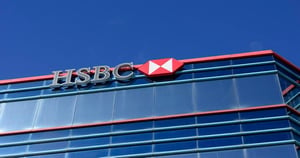Burberry Group PLC (BRBY.L), the quintessential British luxury brand, is a stalwart in the consumer cyclical sector, specifically within the luxury goods industry. Founded in 1856 and headquartered in London, Burberry has a storied history of producing iconic fashion statements that resonate globally. The company operates across a multitude of channels, including retail, wholesale, and licensing, bringing its renowned products to markets in the Asia Pacific, Europe, the Middle East, India, Africa, and the Americas.
Despite its brand prestige, Burberry is currently navigating a challenging financial landscape. The company’s current stock price stands at 665.2 GBp, reflecting a slight price change of 0.04% in recent trading. Over the past year, the stock has oscillated between a low of 571.00 GBp and a high of 1,235.00 GBp, underscoring significant volatility.
Investors might find the valuation metrics somewhat confounding. The absence of a trailing P/E ratio and a staggering forward P/E of 2,859.11 indicate potential discrepancies in future earnings expectations. This could suggest that the market anticipates a rebound in profitability, or it could reflect uncertainties in earnings forecasts. Moreover, the lack of available data for key ratios such as PEG, Price/Book, Price/Sales, and EV/EBITDA necessitates a deeper understanding of the company’s financial health through other performance indicators.
On the performance front, Burberry has faced headwinds, evidenced by a revenue decline of 22.20%. The company’s net income figures are not available, but its earnings per share (EPS) of 0.11 and a modest return on equity of 3.74% highlight a need for strategic adjustments. Furthermore, a free cash flow of negative £12.63 million suggests liquidity challenges that could impact operational flexibility.
Dividend investors may be cautious, given the lack of a current dividend yield and a payout ratio of 559.63%, which indicates that Burberry is distributing more than its earnings, potentially unsustainable in the long run.
Analysts’ perspectives on Burberry are mixed, with six buy ratings, eight hold ratings, and five sell ratings. The average target price of 1,046.74 GBp suggests a potential upside of 57.36% from the current price, aligning with the broader market’s optimism for a recovery in luxury goods demand. However, the wide target price range of 490.00 GBp to 1,400.00 GBp reflects divergent views on the stock’s potential trajectory.
Technical indicators present additional insights. The stock’s 50-day moving average of 1,003.18 GBp and 200-day moving average of 848.94 GBp signal bearish trends, with the current price below both averages. The RSI (14) of 41.87 suggests that the stock is nearing oversold territory, while a negative MACD of -94.44 and a signal line of -81.51 further confirm bearish momentum.
For investors, Burberry’s current positioning offers both challenges and opportunities. The brand’s enduring appeal and global reach are invaluable assets, yet financial metrics point to areas needing strategic focus. Prospective investors might consider monitoring Burberry’s operational strategies, market conditions affecting luxury demand, and management’s ability to navigate economic uncertainties. As the company aims to stabilise its financial footing, discerning investors could find value by staying attuned to its evolving market narrative.




































